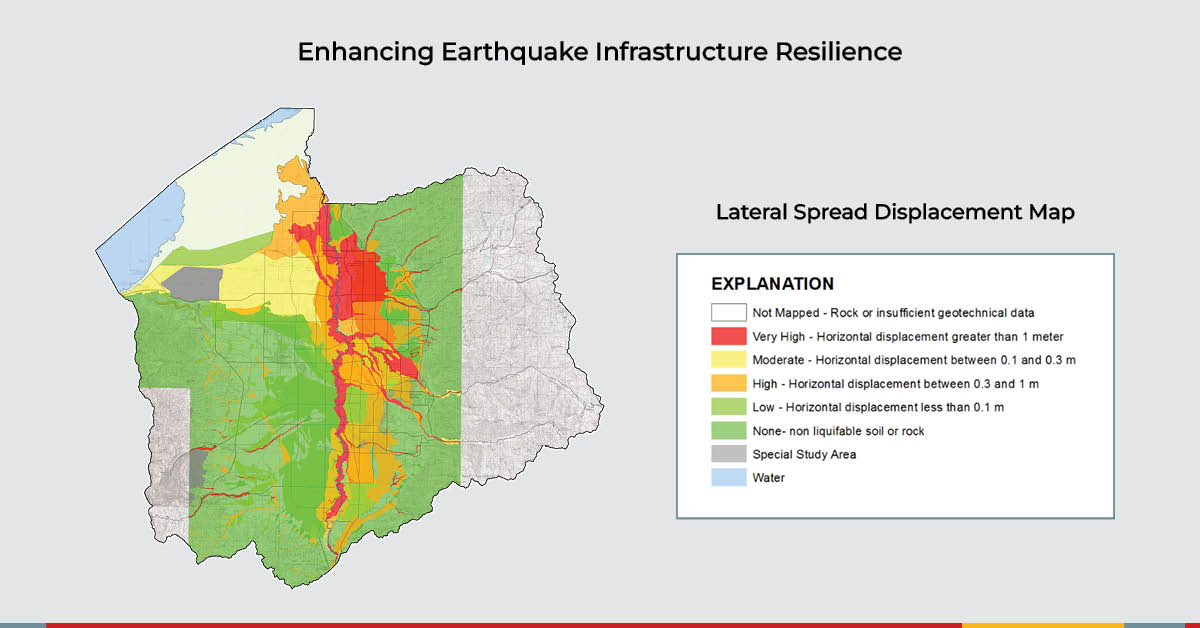The Next Generation Liquefaction (NGL) Project
Dr. Steven Bartlett, funded by a pool-fund USDOT project, the Mountain Plains Consortium, and the Utah Department of Transportation, is one of the Lead Investigators researching earthquake-related infrastructure protection.
Specifically, the project focuses on liquefaction, a perilous event where water-saturated soil momentarily loses its strength and rigidity due to earthquake vibrations, causing it to act like a liquid temporarily.
The hazards arising from liquefaction are numerous. Just a few include:
Infrastructure and Structures:
- Lateral spreading can undermine roads, buildings, and especially bridges.
- Bridges and elevated highways might fail if their foundational supports become destabilized.
Geological and Environmental Hazards:
- Dams are at risk of failure, potentially leading to downstream flooding.
- Underwater landslides induced by liquefaction can trigger tsunamis.
Utilities and Contaminants:
- Underground utilities, including pipes and cables, are prone to breakage.
- Areas impacted by liquefaction might undergo permanent subsidence.
- Contaminated soils, when liquefied, can spread pollutants to cleaner regions or even water sources.
Grasping the complexities and risks of liquefaction is pivotal in urban planning and civil engineering. This knowledge is essential to devise strategies that can effectively mitigate damages during seismic events.
Titled The Next Generation Liquefaction (NGL) Project, this international project is advancing the state of the art in liquefaction research and working toward providing end users with a consensus approach to assess liquefaction potential within a probabilistic and risk-informed framework. Specifically, NGL’s goal is to first collect and organize liquefaction information in a common and comprehensive database to provide all researchers with a substantially larger, more consistent, and more reliable source of liquefaction data than existed previously. Based on this database, we will create probabilistic models that provide hazard- and risk-consistent bases for assessing liquefaction susceptibility, the potential for liquefaction to be triggered in susceptible soils, and the likely consequences.
The project, in collaboration with the Pacific Earthquake Engineering Research (PEER) Center, Utah Department of Transportation (UDOT), and others, consists of two phases: (1) building a comprehensive database and (2) developing predictive models. They have created a well-documented database with historical cases of worldwide liquefaction-induced lateral spread from several earthquakes.
Dr. Bartlett is leading the efforts in gathering information regarding liquefaction-induced lateral spread This type of earthquake-induced land sliding is caused by horizontal soil movement resulting from soil liquefaction during earthquakes. Such movements can cause considerable damage to infrastructure. Dr. Bartlett’s research focuses on enhancing empirical and numerical methods to estimate this ground displacement.
The recently published report highlights advancements in empirical modeling, including a large dataset and thorough comparisons of existing models through simulations. Importantly, it introduces new metrics and techniques, such as Bayesian statistics and a modified linear regression model, while expanding the probabilistic framework for predicting lateral spread.
The Wasatch Front in Utah has a considerable liquefaction and lateral spread hazard. More information and maps regarding the severity and extent of the liquefaction hazard zones can be found here. This webpage contains several reports completed primarily from funding from the United States Geological Survey funded by the National Earthquake Hazards Reduction Program (NEHRP).

